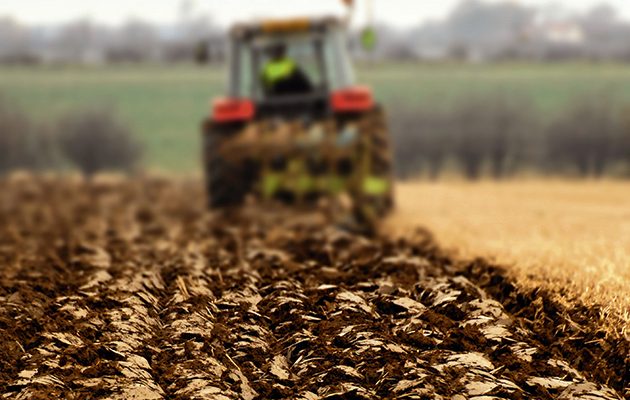The plough endures whereas stubble burning has had its day. Tim Field ponders the future of ploughing, an inherent part of the farming landscape
The mighty plough has moulded our landscape and culture. But does ploughing have a place in modern farming? Tim Field considers its future.
For more from The Field’s new farming columnist, read the harvest boon.
THE FUTURE OF PLOUGHING
From his pinkfoot-grazed stubble on the East Neuk of Fife, my cousin Patrick captivates an unwitting visitor with another humorous yarn. Identifying distant burning stubble across the Firth of Forth he excitedly deciphers the plume as smoke signals… a warning from clan to clan… invasion was imminent!
Of course, a fond memory from the last century as, historical accuracies notwithstanding, stubble burning has been assigned to a bygone era. Since the passing of the Crop Residues (Burning) Regulations in 1993, ploughing has played an increasingly vital role to suppress weeds and pests, and to prepare a seed bed.
As enduring as the iron at the forge, our landscape and culture are moulded by the mighty plough, not least through pub names, star constellations and a legacy in horse breeding. However, the more we understand about soil ecology, embedded carbon and modern cultivation techniques, could the plough be heading the same way as stubble burning?
Healthy soils maintain air space for root development, metabolic activity and moisture retention. This is hard to achieve where several tonnes of ploughing machinery grunt back and forth, in unpredictably wet seasons. Under the furrow, a trial pit reveals where years of compaction by a weighty mouldboard leaves an increasingly impenetrable and impermeable horizon, often known as the “plough pan”.
At the surface, bare soils are susceptible to rainwater runoff causing erosion and leaching of hard-earned nutrients.
As British agriculture evolves, more of our landscape appears to be escaping the scars of the plough in a move to reduce tillage. In combination with other efforts to enhance soil health, the noticeable outcome is an abundance of earthworms and improved yields. The worms help to sequester carbon high in the soil profile by dragging down organic matter from the litter layer, whilst their casts and tunnelling improve soil structure. In an evermore cost-sensitive and carbon-conscious industry, fewer tractor hours with less horse power dragging a heavy plough is also a major saving.
In the absence of heavy ploughing, the soil structure remains relatively undisturbed, root systems retain a hold of the valuable topsoil and an ecosystem of beneficial microorganisms is sustained. The incoming seed has a receptive bed from which to germinate. Furthermore, where the stubble and litter remain, a more complex habitat layer across the field surface has broader conservation benefits than a bleak blanket of bare soil.
HEADED FOR THE HISTORY BOOKS?
Is the mighty plough destined for the history books? Not so fast. Not all features of a stubble field are welcome when trying to cultivate a crop; what about weed burden, overwintering slugs or the concrete surface of sun-baked clay? Former head of the Soil Association, Patrick Holden, is often heard extolling the virtues of the plough, and he has a point.
The invention of heavy ploughing in the Middle Ages unlocked vast tracts of fertile clay soils that were previously impenetrable for cultivation. Those needs remain, captured in the idyllic winter scene of a hard frost gripping a ploughed field, quietly breaking down the sods with freeze-thaw action. Reduced tillage is all very well in light and loamy soils; on heavy clay the plough is invaluable to building a tilth. Turning the soil does not automatically remove organic matter, it merely places it deeper in the soil profile – much improved if turning follows a dressing of well-composted muck.
However, savvy farmers are too shrewd or impatient to wait all winter for a hard frost to bite whilst watching their hard-earned soil fertility wash away. As a result, there is a growing movement to follow tillage with green manures, such as mustard, to develop soil structure and organic matter. These catch crops can also help the control of pests and weeds, and support other conservation interests. Likewise, inverting a fertility building ley or stubble is a valuable method of non-chemical weed management. That’s not to say herbicides are critical to minimum tillage, as organic farmers have a wealth of tricks at their disposal; from new weeding machinery to the act of grazing sheep during early cereal establishment.
Soil is a living ecosystem and no one farming method can be prescribed to all. Successful agriculture systems reflect the conditions of the land and there will long be a niche for the plough to carve a furrow in the landscape.
Follow Tim and Agricology on Instagram: @agricology





